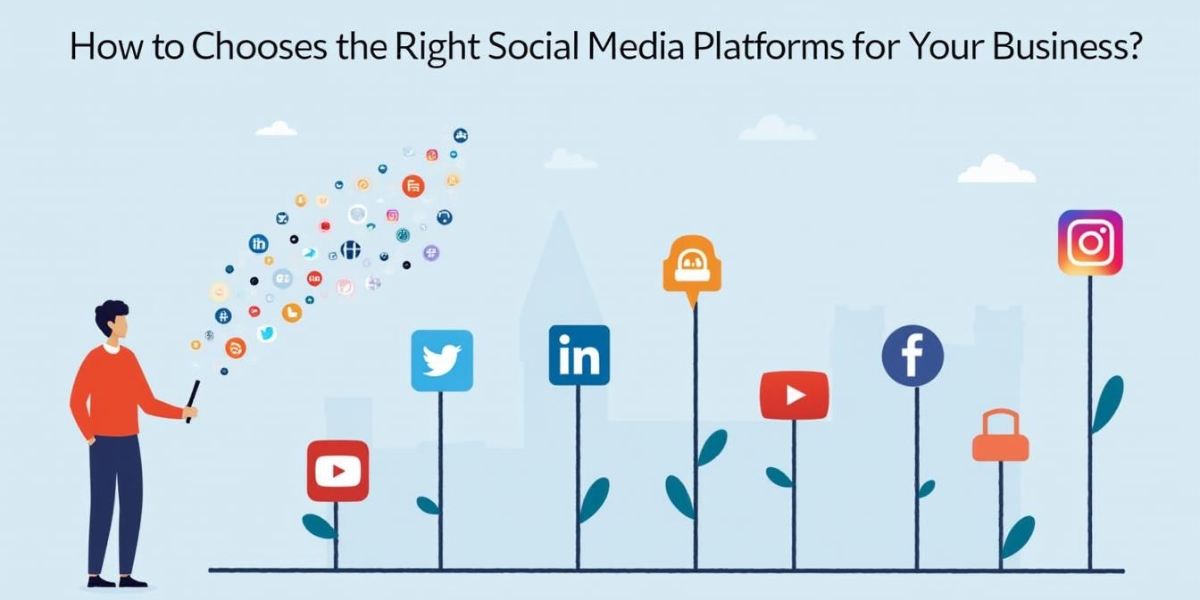Choosing the right social media platform for your business can feel overwhelming with the vast array of options available. However, it is essential to focus on platforms that align with your goals, audience, and type of business. This blog will walk you through the steps needed to make an informed decision on which digital media channels will work best for your brand. Let’s start!
Which Social Media Channel Is Best For You?
Step 1: Identify Your Audience
All marketing endeavors start with identifying your target audience. The more specific you can be, the easier it will be to choose a platform that suits their needs and preferences. You need to answer several questions to build an accurate profile of your audience:
- Who is your typical customer?
- How old are they?
- What is their gender, income, and education level?
- What are their interests beyond your products or services?
By answering these questions, you can start building a customer profile. Knowing your audience helps you select a social media platform where they are most active. Different platforms attract different demographics, so narrowing down this profile ensures that you focus your efforts on platforms where your potential customers spend their time.
Step 2: Define Your Goals
The next step is to define your social media marketing goals. These should be clear and tailored to your business needs. Common objectives include:
- Brand recognition
- Lead generation
- Customer service
- Sales and conversions
For example, YouTube uses its X handle, @TeamYouTube, for customer service queries. This approach not only improves customer satisfaction but also promotes the brand in a positive light. So, remember that social media isn’t just about posting updates; it’s about creating meaningful interactions with your audience that serve your business goals.
Step 3: Find Your Audience on Social Media Platforms
Now that you have a clearer picture of your audience and goals, the next step is to determine which platform your audience uses most frequently. Each social media channel has its own demographics and user behavior, so it’s important to look at where your audience is most active.
Facebook is the largest social platform, with over 3.07 billion active users. It’s ideal for businesses that want to connect with an older demographic, build customer loyalty, and keep in touch with existing clients. However, if you’re looking to acquire new customers, the sheer volume of content on Facebook might limit your reach.
X (formerly Twitter)
X is a fast-paced platform that excels in real-time engagement. It is often used by businesses for brand awareness, customer service, and to join trending conversations via hashtags. If you’re looking to interact with your audience in real-time, X is a great option.
Instagram’s focus on images and short-form videos makes it perfect for businesses in fashion, food, and beauty. The younger demographic on this platform makes it ideal for businesses targeting Millennials and Gen Z.
LinkedIn is a professional network that works best for B2B (business-to-business) companies. LinkedIn is the right platform if your business focuses on networking, lead generation, or recruitment. It’s ideal for professional connections and content related to industry news, career tips, and corporate values.
YouTube
YouTube is ideal for businesses that can create engaging videos, such as tutorials, product demonstrations, or behind-the-scenes content. Service-based industries, lifestyle brands, and educational content creators can see significant returns from YouTube.
TikTok
TikTok’s short-form video format allows businesses to connect with a wide audience in creative ways. It is excellent for building brand awareness and engaging with users in a fun, informal manner.
Step 4: Consider the Nature of Your Business
It’s important to consider whether your business is B2B (business-to-business) or B2C (business-to-consumer), as this will influence your social media choice.
- B2C businesses often thrive on platforms like Facebook, Instagram, and Pinterest because these platforms allow for visual engagement and interaction with customers.
- B2B businesses generally perform better on LinkedIn, where you can target professional audiences, share industry insights, and engage in networking.
Every business should also leverage YouTube for content marketing, as it is Google-friendly and adds authenticity to your brand. YouTube videos can also be repurposed for other platforms, making it a versatile tool in your digital media strategy.
Step 5: Focus on Your Core Target Audience
Small businesses should be strategic about their social media efforts. Focus on the platforms that are most frequented by your target audience.
For example, if your target demographic is young adults, platforms like Instagram and TikTok may offer a higher return on investment (ROI).
Step 6: Research Your Competitors
Looking at what your competitors are doing on social media is an essential step in making an informed decision. Check their digital media channels, study the type of content they post, and analyze how frequently they engage with their audience. This will give you a better understanding of where your business can stand out and what content resonates with your shared target audience.
Step 7: Build a Consistent Strategy Across Platforms
Developing a maintainable social media strategy that can be applied across all selected platforms is crucial for small businesses. Use scheduling tools to streamline your efforts and ensure your brand’s voice is consistent. This allows you to focus on quality content rather than worrying about when to post.
Step 8: Understand and Align Your Social Media Goals
Each social media platform offers different benefits, so it’s essential to align your goals with the platform’s strengths. X may be your best option if your goal is to enhance customer service.
Alternatively, you can opt to hire professionals to navigate the challenges of selecting the appropriate social media platforms for your brand by choosing the best social media services in Dubai from Orbi Creatives!
Step 9: Let Your Product or Service Guide You
Your business type and product or service should guide your decision. If you’re a consumer-facing business, Instagram or TikTok could be the perfect platforms to showcase your offerings. On the other hand, if you are focused on building professional relationships or generating leads, LinkedIn may be the more suitable choice.
To Wrap Up
Choosing the right social media platform for your business doesn’t have to be complicated. By understanding your audience, defining clear goals, and selecting the platform that best aligns with those objectives, you’ll be on your way to achieving success in social media marketing.
Keep your content focused and consistent, and always monitor the performance of your chosen platforms to ensure that you’re getting the best ROI. Stop putting your online presence on hold and get in touch with Orbi Creatives for our digital marketing services!






